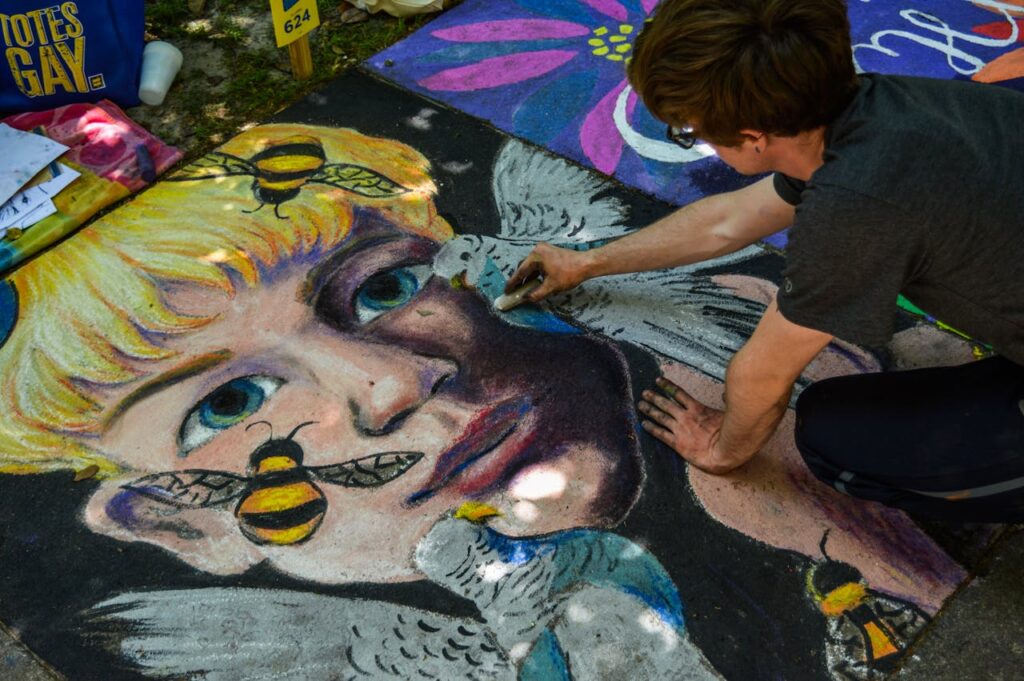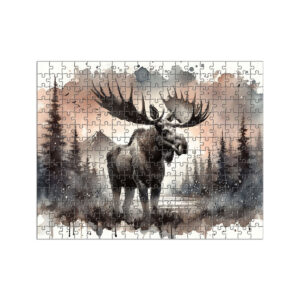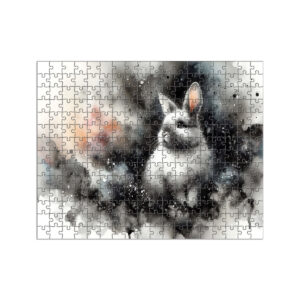
Explore & Play
Discover interesting topics and solve the accompanying crossword puzzle.
Painter Crossword | Test Your Art Knowledge
Table of Contents
Welcome to our exploration of iconic art movements! At the beginning of this blog post, you’ll find an engaging Painter crossword designed to test your knowledge of famous artists and their contributions. Feel free to tackle the crossword first as a fun challenge, and then dive into the article to gain deeper insights into how these artists shaped the art world. Alternatively, if you’re new to the topic, you might prefer to read the article first to familiarize yourself with the art movements and then return to the Painter crossword with enhanced knowledge. Enjoy your journey through art history!
Painter Crossword
You can either fill in the crossword puzzle directly on this page or click the button in the bottom right corner to print it for free.

From the Streets of Paris to the Galleries of New York: The Evolution of Iconic Art Movements
Art has always been a reflection of its time, and throughout history, iconic art movements have shaped the way we view the world. From the bustling streets of Paris to the grand galleries of New York, the evolution of art is marked by revolutionary changes and influential artists. This article will explore various art movements and the prominent painters who defined them, shedding light on their contributions and enduring legacy.
I. The Birth of Impressionism: Capturing the Moment
A. Claude Monet and the Water Lilies
Claude Monet, a pivotal figure in the Impressionist movement, revolutionized art with his depiction of fleeting moments in nature. Monet’s approach was groundbreaking; he sought to capture the essence of a scene rather than its detailed accuracy. His famous water lilies series exemplifies this technique, showcasing his mastery of light and color. Monet’s use of vibrant hues and loose brushwork created a sense of immediacy and movement, reflecting the changing qualities of light throughout the day. This innovative style not only defined Impressionism but also paved the way for future artistic explorations.
B. Pierre-Auguste Renoir’s Celebrations of Everyday Life
Pierre-Auguste Renoir’s paintings are a vibrant celebration of everyday life and human interactions. His work often depicted social scenes, such as his renowned piece, “Dance at Le Moulin de la Galette,” which captures a lively Parisian dance hall. Renoir’s use of bright colors and soft brushstrokes conveyed a sense of warmth and vitality. Through his art, Renoir offered a joyful and intimate view of society, highlighting the beauty and spontaneity of ordinary moments. His contributions to Impressionism helped to expand the movement’s focus from landscapes to social interactions and human experiences.
II. The Rise of Cubism: Breaking Boundaries
A. Pablo Picasso: The Pioneer of Cubism
Pablo Picasso’s innovative approach to form and perspective made him a central figure in the Cubist movement. Picasso’s work, including his powerful piece “Guernica,” challenged traditional artistic conventions by breaking subjects into geometric shapes and presenting multiple perspectives simultaneously. This radical departure from realism was designed to reflect the complexity and fragmentation of modern life. Picasso’s influence on Cubism extended beyond his own work; he inspired countless artists to explore new ways of seeing and representing the world.
B. Georges Braque: Collaborator and Innovator
Georges Braque, alongside Picasso, played a crucial role in developing Cubism, challenging traditional artistic conventions. Braque’s approach involved dissecting objects and reassembling them into abstract forms, emphasizing the process of perception itself. His collaboration with Picasso led to the development of Analytic Cubism, which focused on deconstructing and analyzing forms. Braque’s contributions helped to solidify Cubism as a major art movement, influencing the trajectory of modern art and encouraging artists to experiment with new techniques and perspectives.
III. Surrealism and Beyond: Exploring the Subconscious
A. Salvador Dalí’s Surreal World
Salvador Dalí’s surreal landscapes and dreamlike imagery captured the imagination of audiences worldwide. Dalí’s works, such as “The Persistence of Memory,” are known for their bizarre and fantastical elements, including melting clocks and distorted forms. His exploration of the subconscious and dreams offered a new way of understanding reality, blending the familiar with the strange. Dalí’s distinctive style and imaginative vision made him one of the most recognizable figures in Surrealism, pushing the boundaries of artistic expression and inviting viewers to engage with the mysteries of the mind.
B. Joan Miró’s Abstract Fantasies
Joan Miró’s abstract and whimsical creations offered a playful yet profound exploration of the subconscious. Miró’s use of vibrant colors, organic shapes, and symbolic forms created a sense of spontaneity and freedom. His work, often characterized by playful abstraction and imaginative compositions, was deeply influenced by Surrealist ideas. Miró’s contribution to the movement expanded the possibilities of abstract art, encouraging artists to explore their inner worlds and express their creativity in new and unconventional ways.
IV. Expressionism and Its Emotional Depth
A. Edvard Munch: The Emotional Impact of “The Scream”
Edvard Munch’s iconic painting “The Scream” captures the essence of human anxiety and existential dread. Munch’s use of bold colors and dramatic brushstrokes conveys a profound sense of emotional turmoil. The painting’s haunting figure, with its anguished expression and distorted background, reflects Munch’s exploration of psychological and existential themes. Munch’s role in the Expressionist movement was pivotal, as his work highlighted the intense emotional and psychological experiences that characterized the movement’s focus on personal and subjective reality.
B. Egon Schiele’s Raw and Intense Portraits
Egon Schiele’s portraits are known for their raw emotional intensity and unique expressionistic style. Schiele’s work, marked by its striking use of line and color, presents a stark and unflinching view of human vulnerability. His portraits often feature exaggerated forms and intense emotional expression, challenging conventional representations of the human body. Schiele’s contributions to Expressionism were significant, as his work offered a new perspective on human emotion and psychological depth, influencing the development of modern art.
V. The Evolution of Modernism: Embracing New Ideas
A. Gustav Klimt and the Opulence of Art Nouveau
Gustav Klimt’s opulent and decorative style exemplifies the Art Nouveau movement and its emphasis on intricate detail. Klimt’s use of gold leaf, ornate patterns, and symbolic imagery is most famously seen in “The Kiss,” a masterpiece that embodies the sensual and decorative qualities of Art Nouveau. His work celebrated beauty and luxury, blending modernist innovation with historical influences. Klimt’s contributions to the movement demonstrated how modern art could embrace both ornamental aesthetics and deep symbolic meaning.
B. Georgia O’Keeffe’s Modernist Floral Abstractions
Georgia O’Keeffe’s large-scale floral paintings are celebrated for their abstraction and modernist approach. O’Keeffe’s focus on close-up views of flowers and natural forms emphasized their structural beauty and emotional impact. Her work, characterized by bold colors and simplified forms, challenged traditional notions of representation and encouraged a new appreciation for the abstract qualities of nature. O’Keeffe’s influence on American modernism was profound, as her art bridged the gap between realism and abstraction, offering a fresh perspective on the natural world.
VI. The Influence of Pop Art and Abstract Expressionism
A. Andy Warhol’s Pop Culture Phenomenon
Andy Warhol’s exploration of consumerism and pop culture redefined art in the 20th century. Warhol’s iconic works, including the “Campbell’s Soup Cans” series, highlighted the intersection of art and commercialism. His use of repetitive imagery and vibrant colors challenged traditional notions of art, elevating everyday objects to the status of high art. Warhol’s impact on the Pop Art movement was transformative, as his work questioned the boundaries between art and popular culture, influencing generations of artists and reshaping the art world.
B. Mark Rothko’s Emotional Color Fields
Mark Rothko’s color field paintings evoke deep emotional responses through their simplicity and use of color. Rothko’s work, characterized by large, contrasting fields of color, invites viewers to engage with the emotional and spiritual aspects of his compositions. His approach to Abstract Expressionism emphasized the power of color and form to convey mood and meaning. Rothko’s influence on the movement was significant, as his art encouraged a contemplative and immersive experience, expanding the possibilities of abstract art.
VII. The Renaissance Revival: Masters of the Past
A. Leonardo da Vinci: The Genius of the Renaissance
Leonardo da Vinci’s unparalleled genius and artistic achievements continue to captivate audiences centuries later. Da Vinci’s masterpieces, including the enigmatic “Mona Lisa,” showcase his extraordinary skill in capturing human emotion and anatomical accuracy. His innovative techniques and detailed observations set new standards in Renaissance art, blending scientific inquiry with artistic creativity. Da Vinci’s contributions to the Renaissance were transformative, influencing the development of art and science and leaving a lasting legacy.
B. Michelangelo and the Masterpieces of the Sistine Chapel
Michelangelo’s frescoes in the Sistine Chapel are a testament to his exceptional skill and visionary artistry. The ceiling’s intricate and dramatic scenes, including “The Creation of Adam,” highlight Michelangelo’s mastery of composition and narrative. His work on the Sistine Chapel represents the pinnacle of Renaissance art, demonstrating his ability to convey profound religious and philosophical themes through visual art. Michelangelo’s contributions to the Renaissance were monumental, shaping the course of art history and setting a standard for future generations.
C. Raphael’s Harmonious Compositions
Raphael’s harmonious compositions and serene figures represent the pinnacle of Renaissance artistic achievement. His work, including “The School of Athens,” showcases his mastery of perspective and classical ideals. Raphael’s ability to blend complex narratives with balanced compositions set him apart as one of the great Renaissance artists. His influence extended beyond his lifetime, shaping the development of art and leaving an enduring impact on the artistic tradition.
VIII. The Legacy of Iconic Painters
A. How Art Movements Shaped Modern Art
The evolution of art movements and the contributions of iconic painters have left an indelible mark on the modern art world. Each movement and artist played a crucial role in shaping the trajectory of art, influencing subsequent generations and expanding the boundaries of artistic expression. From Impressionism to Pop Art, the innovations and ideas introduced by these painters continue to resonate and inspire contemporary artists.
B. Exploring the Crossword Puzzle
As a fun way to test your knowledge of these iconic painters, we’ve created a crossword puzzle featuring their names and significant works. This crossword not only challenges your familiarity with these influential figures but also provides a playful way to engage with their contributions to art. Try your hand at solving the puzzle and see how well you know the masters of art history!
Conclusion
The journey through the evolution of art movements reveals a rich tapestry of creativity and innovation, driven by legendary artists from various eras. From the Impressionists’ vibrant depictions of everyday life to the revolutionary ideas of Cubism and Surrealism, each movement has contributed to a deeper understanding of human experience and artistic expression. By exploring the contributions of these iconic painters, we gain insight into the dynamic and ever-evolving world of art.
Share to...
I hope you enjoy the content.
Want to receive our daily crossword puzzle or article? Subscribe!
You may also be interested in
Share to…
Want to receive our daily crossword puzzle?
-
Jigsaw Puzzles
Majestic Moose in Forest Watercolor Jigsaw Puzzle 250 | 300 | 500 Brikker
kr 348,00 – kr 439,00Price range: kr 348,00 through kr 439,00 Select options This product has multiple variants. The options may be chosen on the product page -
Jigsaw Puzzles
Blue-Eyed Kitten Puzzle Delight 250 | 300 | 500 Pieces
kr 348,00 – kr 439,00Price range: kr 348,00 through kr 439,00 Select options This product has multiple variants. The options may be chosen on the product page -
Jigsaw Puzzles
Chinese Zodiac Rabbit Jigsaw Puzzle – Ink Art Series 250 | 300 | 500 Pieces
kr 348,00 – kr 439,00Price range: kr 348,00 through kr 439,00 Select options This product has multiple variants. The options may be chosen on the product page

















